For energy investors, 2025 is off to a great start.
US inventories are trending in the right direction, with total crude and petroleum inventories at their lowest level since 2022 and are now well below both five and 10-year averages.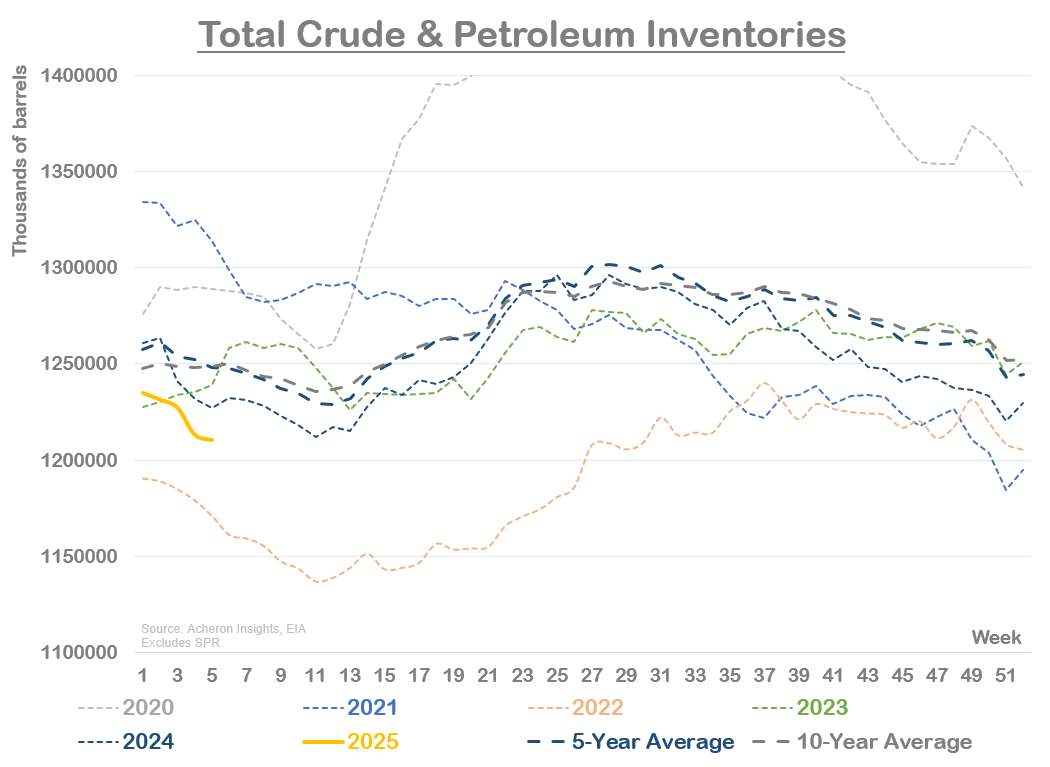
When we consider this in context of expectations for inventory builds through the first half of the year on the back of a consensus paper surplus, the current state of US oil inventories is positive.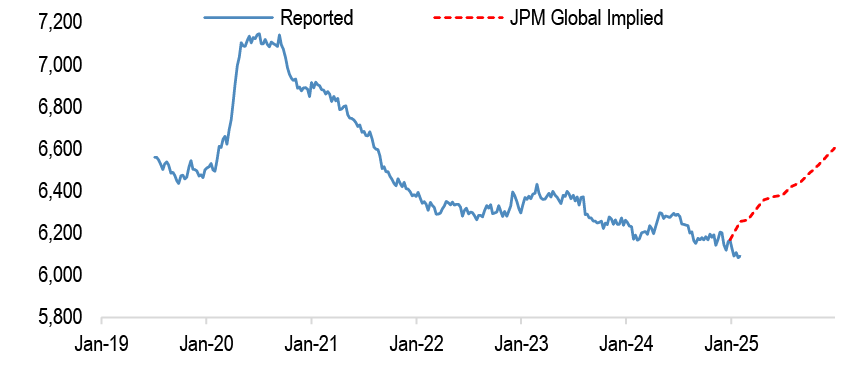
Source: JP Morgan
One of the primary drivers of this trend has been the larger than usual draw in distillate inventories. Jet fuel stocks have also seen smaller than usual builds in January, a period of generally subdued air travel. That this has occurred in the face of a cold January in the US paints a relatively constructive picture of overall US demand.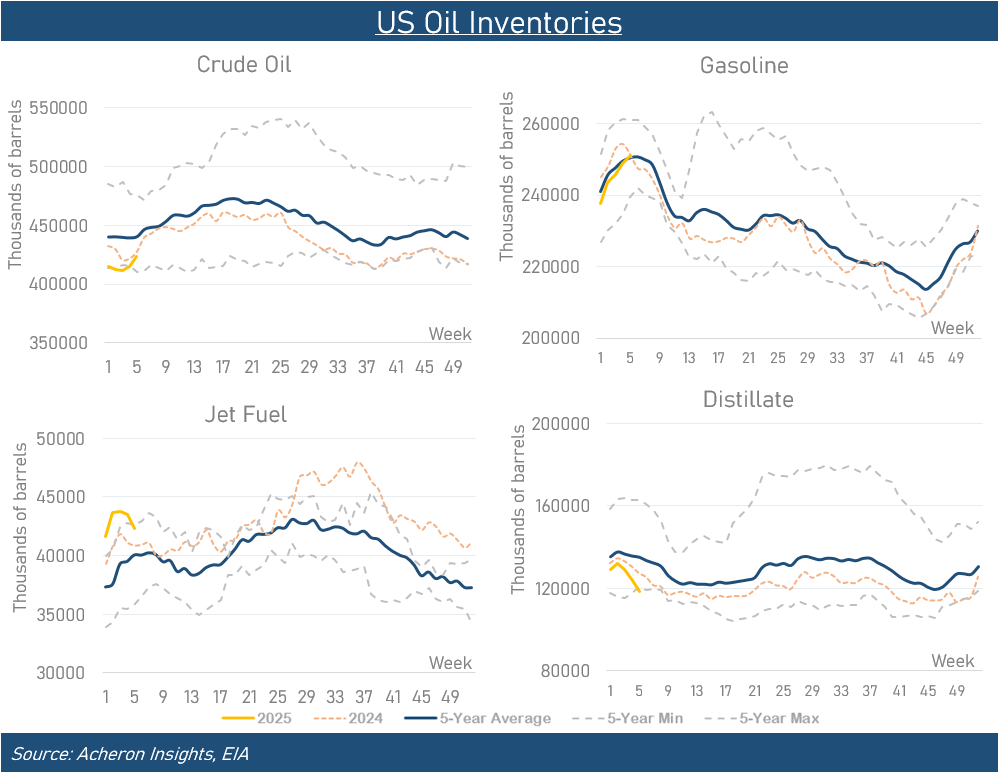
There is no doubt January’s cold weather has been a supportive factor for oil bulls, highlighted by significant draws in propane and heating oil stocks.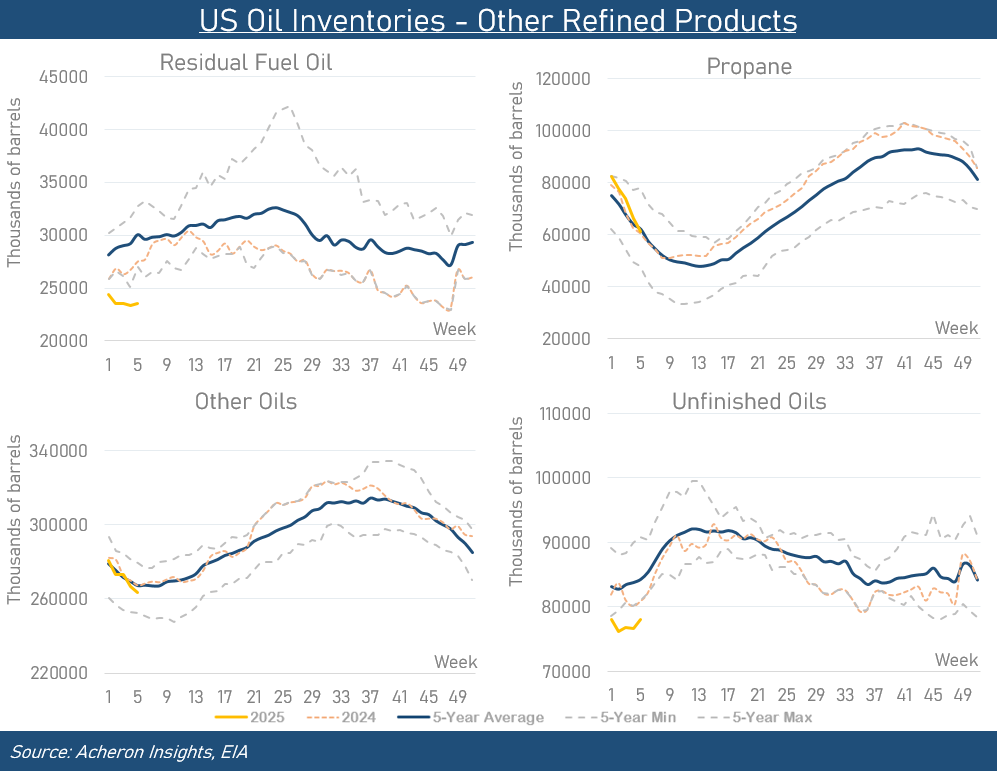
Following the recent pull-back in oil prices in the face of recent robust EIA inventory reports, oil prices appear to be once again approaching undervalued levels relative to inventories. At least according to my models.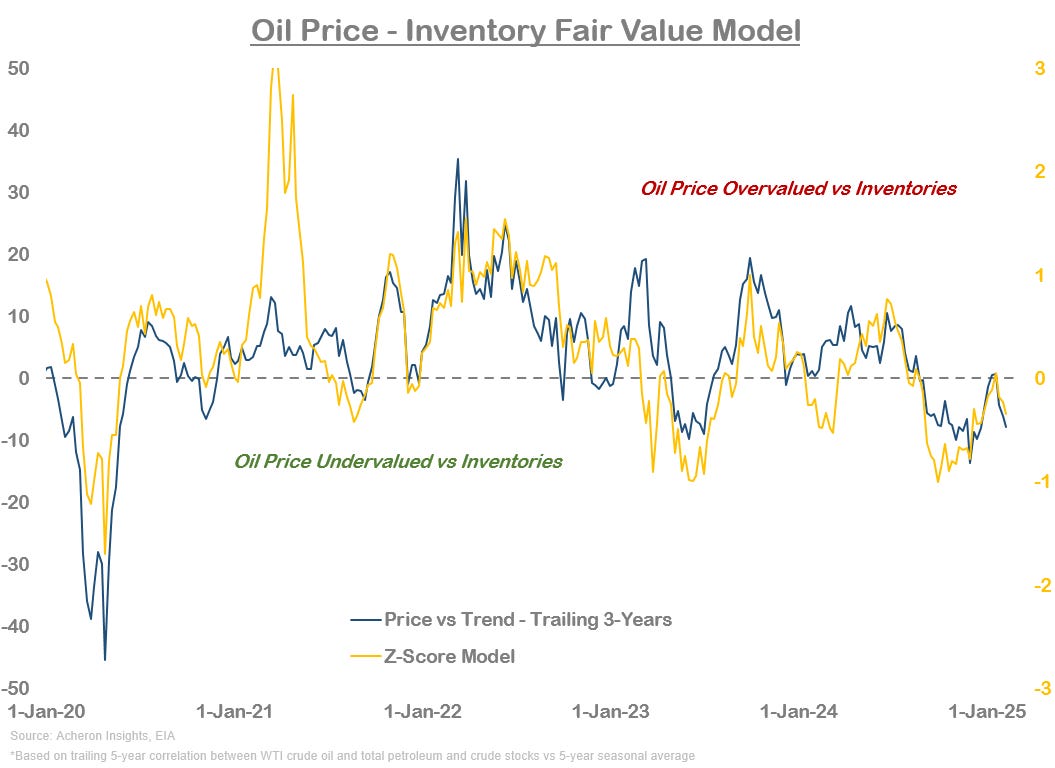
And while physical market signals have weakened over the past few weeks as prices have corrected, crude oil term structures remain backward-dated across the curve, particularly as it relates to Brent.
This is not something we usually see amidst the type of oversupply consensus paper balances would have you believe is present during Q1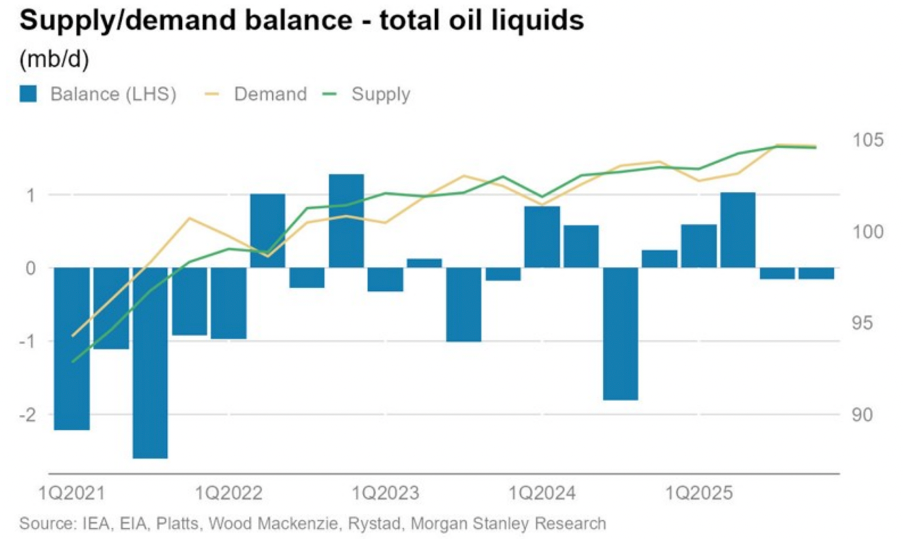
Another dynamic which has been leaning rather bullish in the short-term is the recent pop in crack spreads, particularly as both gasoline and distillate cracks are moving higher in unison.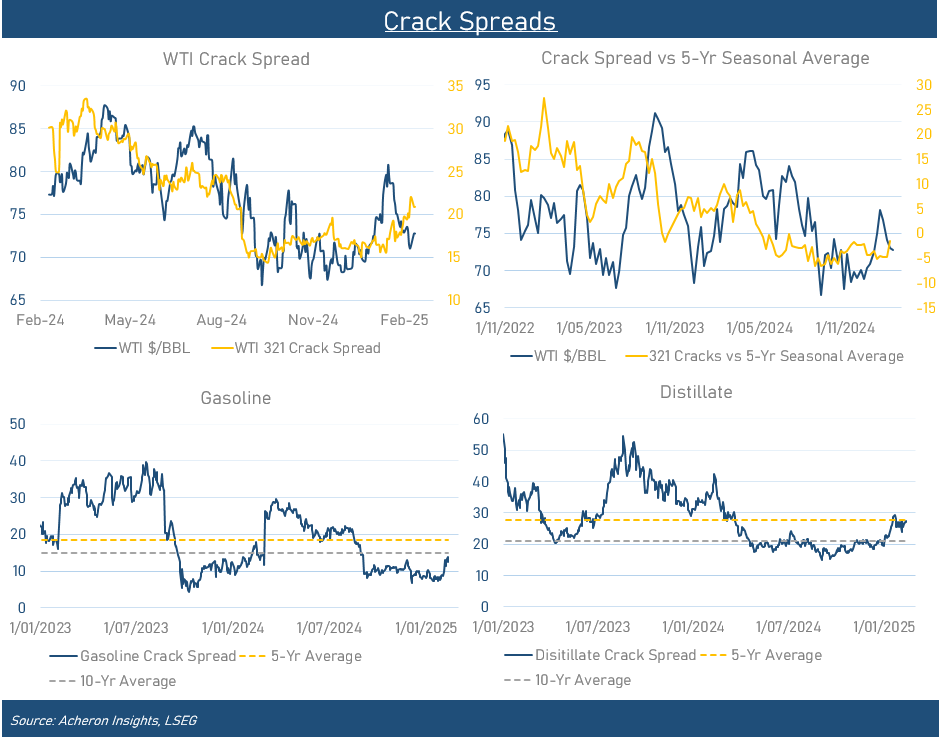
Unsurprisingly, as a result of (or rather the cause of) these various dynamics, the EIA’s implied demand data is robust across the board. Gasoline, diesel and jet fuel demand are all at four-year highs, as is propane demand.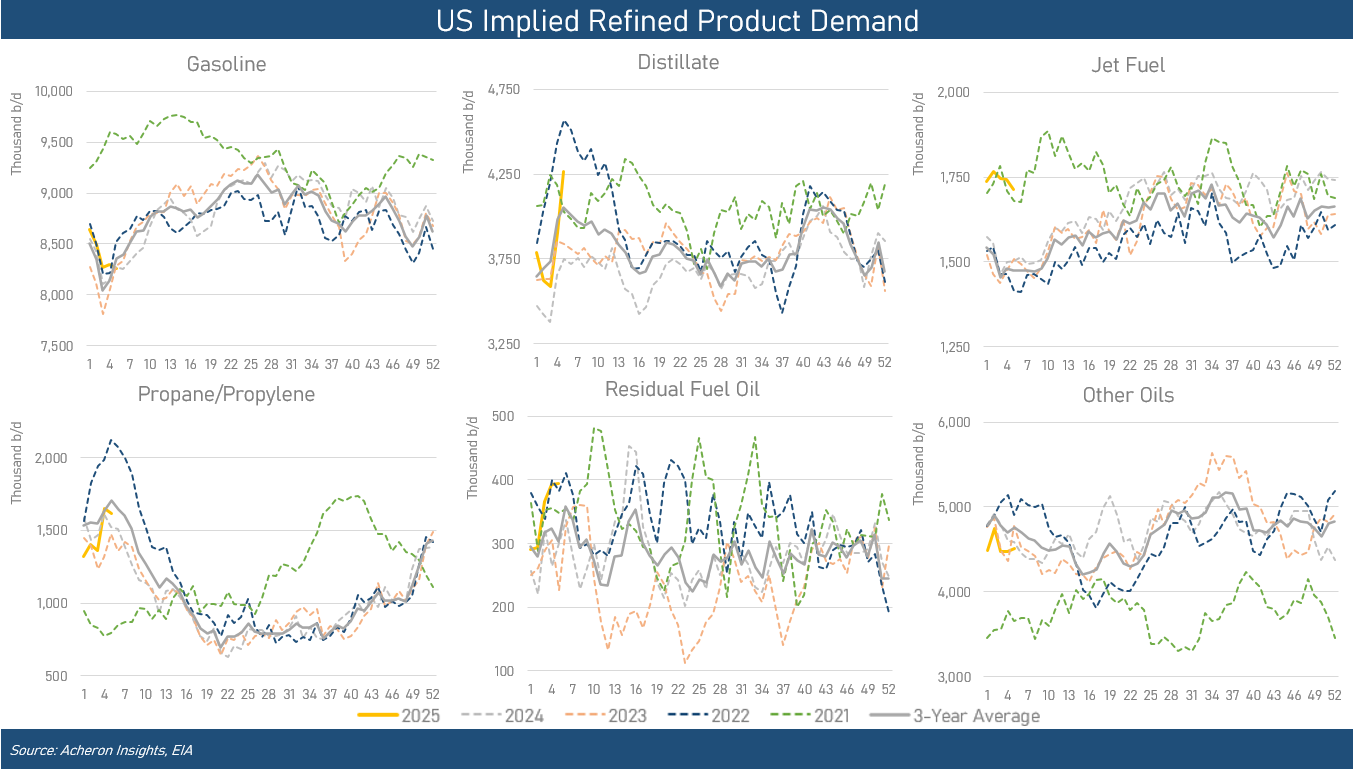
As I touched on earlier, the biggest factor here has been the recent rise in diesel demand. Diesel is the fuel that powers the global economy and whose demand is most sensitive to economic growth, as we can see below.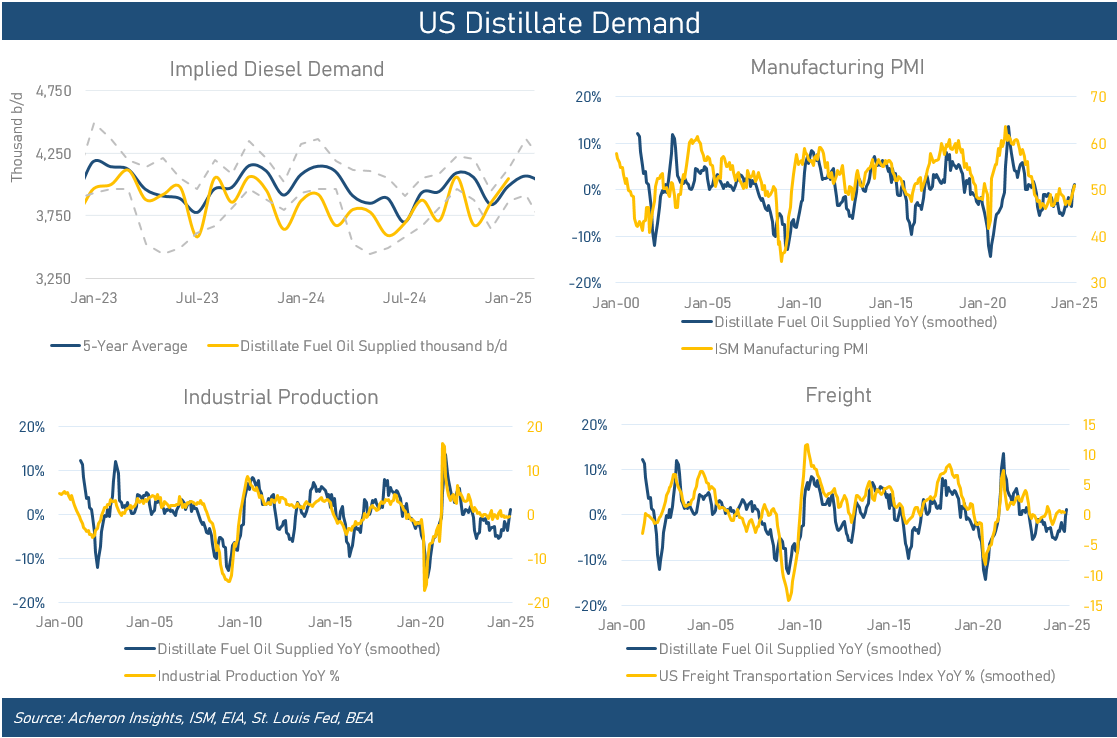
The manufacturing sector both globally and in the US has been stagnant for much of the past 12-18 months. And though it has been more resilient in the US, weaker manufacturing activity, freight and transportation have all been holding down diesel consumption.
Fortunately, US manufacturing activity looks to be picking up. Not only is the ISM Manufacturing PMI back above 50, but manufacturing new orders/inventories spreads - which tend to lead the PMI - are also moving higher. Other short to medium-term leading economic indicators also continue to point to a favourable outlook for the US economy through the first half of 2024.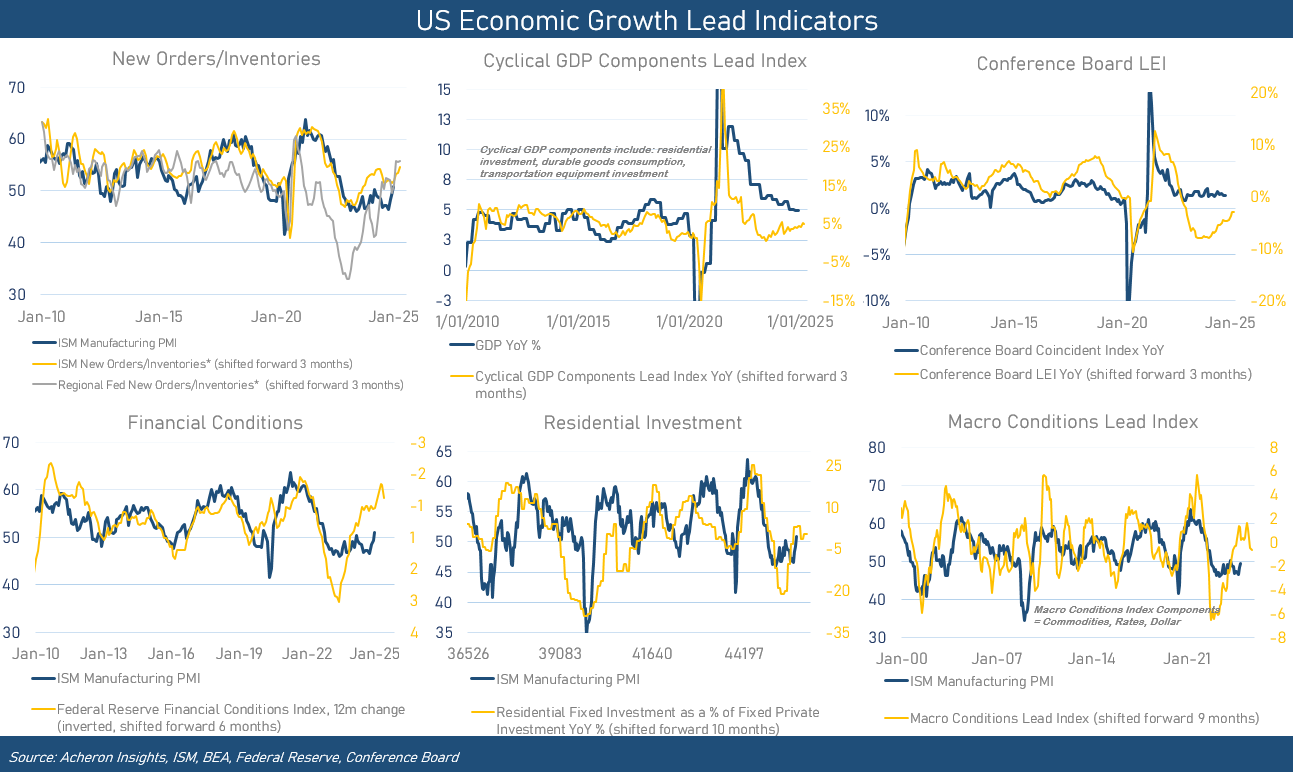
Should US manufacturing activity continue to trend higher over the coming quarters as these lead indicators suggest it may, this will be a notable tailwind to oil prices. However, until we see a proper recovery in Chinese demand, crude prices above ~$85-$90 appear unlikely.
We are however starting to see signs of economic improvement in China, with LEIs slowly starting to pick-up.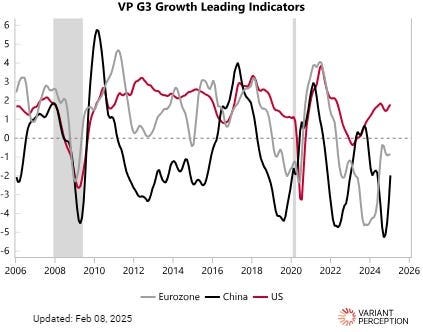
From a positioning standpoint, this pull-back has unsurprisingly been accompanied by a notable washout of hedge fund longs, particularly as it relates to WTI and gasoline. While Brent and diesel futures haven’t seen much of a reduction in net long positioning, overall speculative positioning in crude and energy as a whole has returned to neutral levels, suggesting there is no real directional asymmetry presently in the market from a positioning perspective.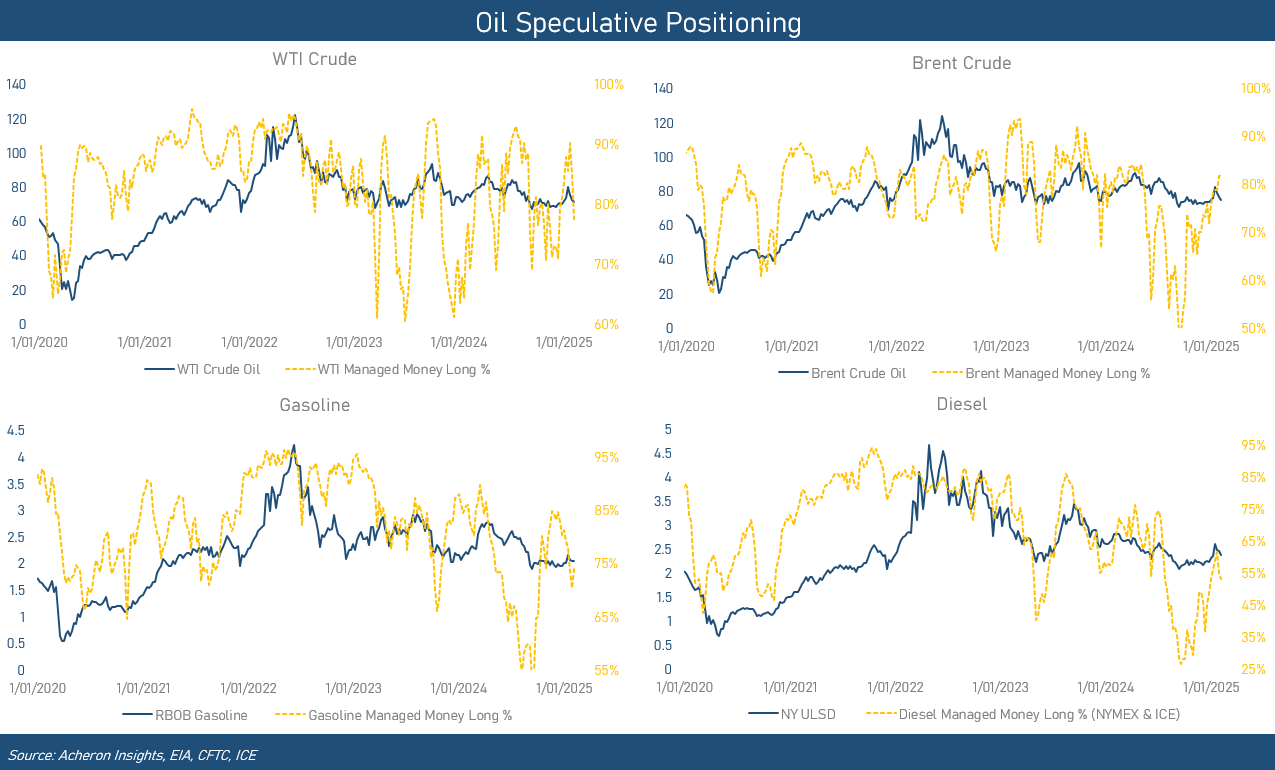
While there is a risk we see a further flush-out of speculative longs, the recent improvement in fundamentals over the short-term suggest to me this is probably unlikely, particularly as we are right on the precipice of the most favorable period of the year for oil prices. It is also worth noting weather forecasts too remain favorable for February.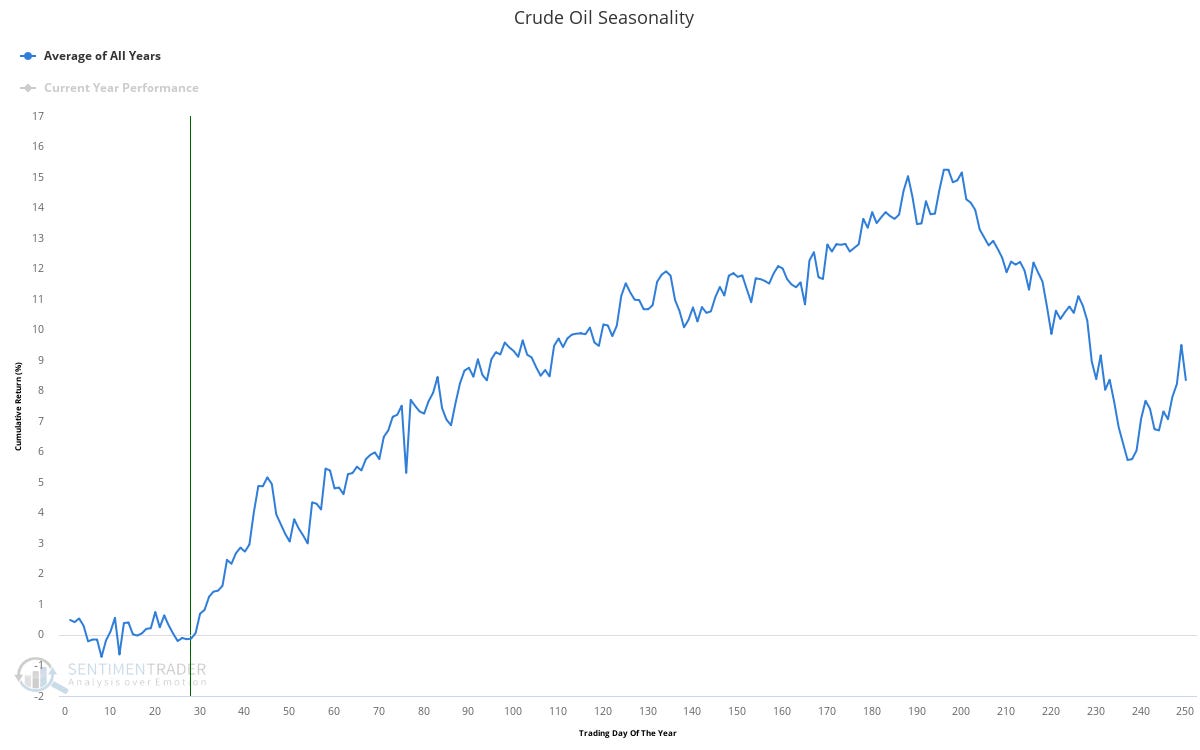
Therefore, I believe we are likely at a relatively attractive buying opportunity for oil, at least from a short-term perspective. And although my tactical crude model is currently neutral, it is not currently sending any bearish signals, so should physical market indicators tighten once again, this will swiftly shift to bullish.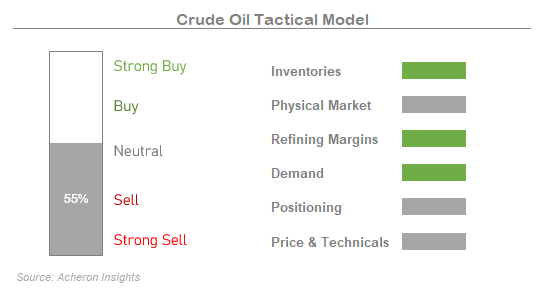
A Quick Word On US Oil Production
The EIA recently released its monthly US oil production data for November, with headline production coming in at 13.3 million b/d, and adjusted production coming in at 13.7 million b/d.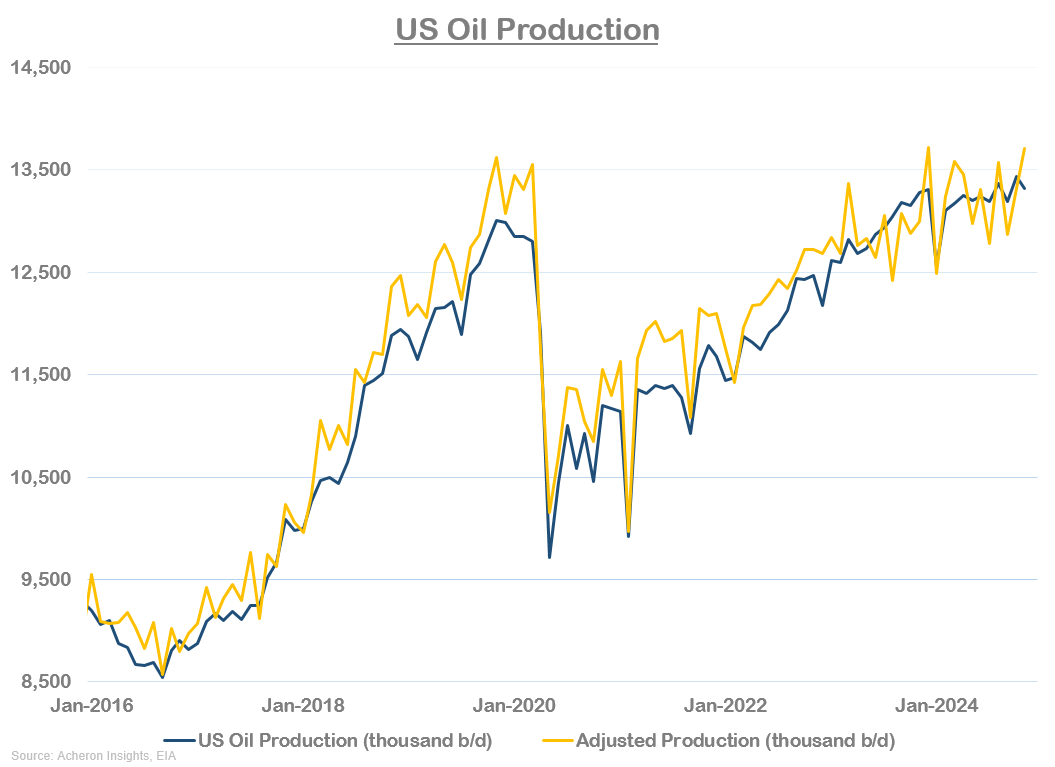
Lower-than-expected US oil production growth was a significant theme in 2024 and is one I expect to continue in 2025. Despite the jump, November’s adjusted production is still below December 2023 levels, confirming there was effectively no discernible growth in US production in 2024.
It is also worth remembering US oil production tends to see its highest levels of growth in the August to November months.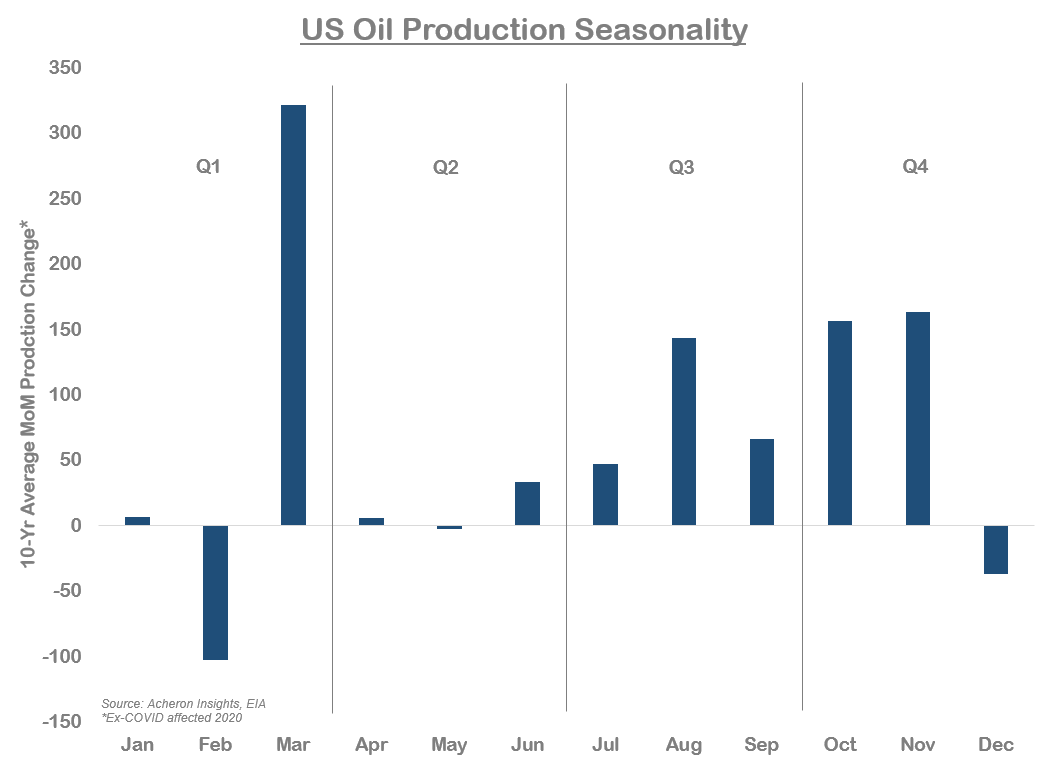
What this suggests is the EIA’s monthly production figures are likely to show no additional growth in December, January or February. The EIA’s weekly production estimates (adjusted below) are confirming this notion.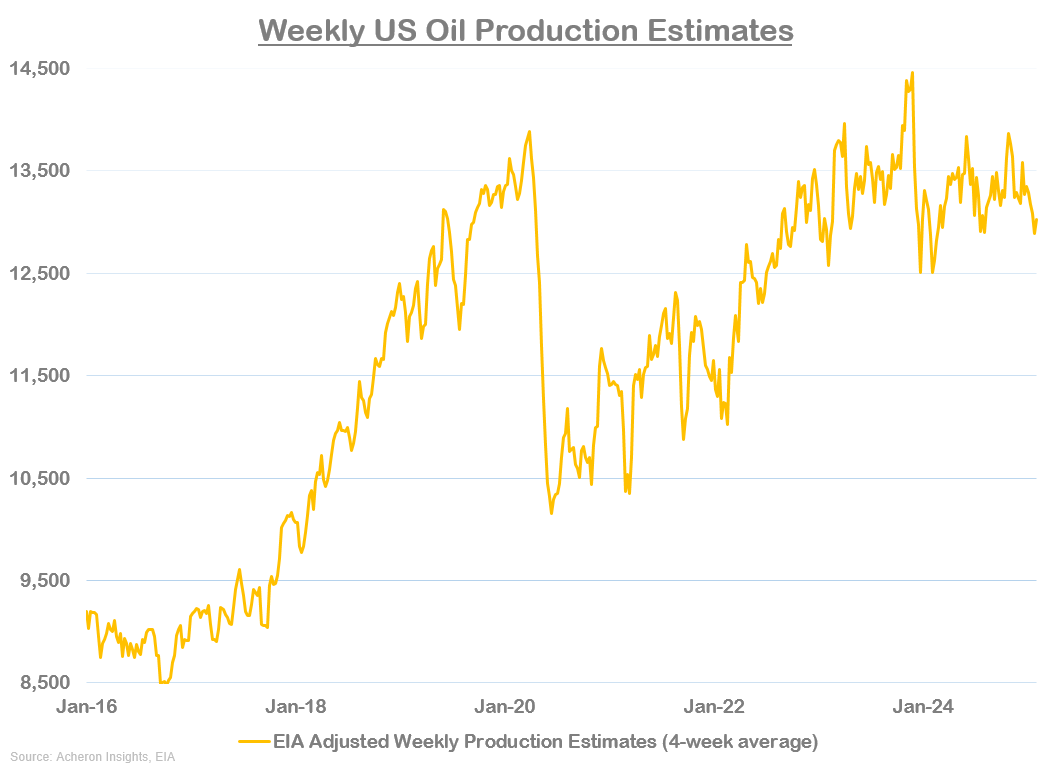
Some of this is a result of colder weather impacting production throughout the US winter, but the larger and more important factor is we are close to a peak in US oil production (as I discussed here and here), a dynamic which will have significant implications for oil prices over the coming years.
Summary & Outlook
- Oil prices are likely to spend most of the year in the $70-$80 range, a trader’s market. Long-term bulls should use moves to the lower end of this range to buy into their favourite stocks. We appear to be now at the lower end of that range.
- Demand is the big question mark for 2025. An upside surprise in demand (particularly from China) is what will push prices to $90, if only briefly.
- We aren’t likely to see any upside surprises in supply. Supply is more likely to surprise to the downside than the upside, both from non-OPEC+ (US & Brazil), and OPEC+ (potential further delay of the eight-member voluntary cut unwinds should prices continue to hover around the low $70s).
- This should lead to projected surpluses be revised lower, particularly as we move through Q1/Q2 and expected inventory builds do not occur.
Bullish Developments
- Kazakhstan, Russia and Iraq compensating for their previous overproduction increases OPEC+ unity and reduces the risk of a price war within OPEC+.
- The delay of unwinding 2.2 million b/d in voluntary cuts, and longer period in which they are being unwound (April 2025 to Sept 2026). The slower pace of cut unwinds should be easily absorbed by the trend in demand growth.
- The impact of the 2.2 million b/d eight-member voluntary cut unwinds from 2Q25 is overstated. Iraq, Russia and Kazakhstan have been overproducing, and their production quota increase is based on their baseline levels, which they are only now adhering too. As the actual production increase from Q2 is small, once we account for their compensation of reducing production below their current quota to account for previous overproduction, the net increase in supply is minimal.
- UAE also delayed its production increase by three months, and is now to be phased in over 18 months, instead of nine.
- OPEC+ production cuts have not translated into commensurate declines in crude exports. However, this could be a result of an increase in Middle East refinery capacity, and thus an increase in petroleum product exports at the expense of crude exports. Non-seaborne exports are also not captured in headline OPEC+ export data.
- Paper balances for 2025 are heavily skewed towards surpluses, meaning the market is susceptible to upside surprises in demand/downside surprises in supply.
- Non-OPEC+ production growth continues to disappoint, especially in the US.
Bearish Developments
- Enforcement of Iranian sanctions could be bearish for the market. Trump is likely to only enforce sanctions if OPEC+/Saudi agrees to increase production, and he will not be able to effectively keep Iranian oil off the market.
- Stagnant global economic growth, particularly in China. China is still yet to announce sufficient stimulus to spur economic growth, while leading economic indicators are yet to materially inflect higher.
What to Watch
- Inventory changes in Q1 will determine much of the direction of oil for the year. Consensus is expecting a big surplus.
- Iraq and Kazakhstan compensation for recent overproduction.
- Chinese stimulus and Chinese leading economic indicators. Any upside surprises in Chinese economic growth will again remove much of the paper surpluses most expect for 2025.
